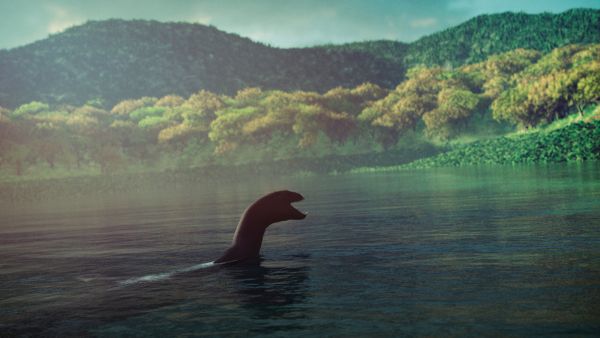
The huge news breaking today is the discovery of Loch Ness Monster-like fossils. Not that it’s the first plesiosaur remains ever found. However, this finding suggests that maybe a Nessie-like creature once did swim in the waters of Loch Ness. Or at least could have, whereas before that seemed unlikely.
But let’s not get too excited. The fossils that led to this new theory weren’t found anywhere near Scotland. Still, it yielded some interesting clues and turned a previous theory about plesiosaurs on its head. And because of that, I’m going to suggest another. Let’s dive in.
Where the Loch Ness Monster-Like Fossils Were Found
Researchers from the U.K.’s University of Bath and the University of Portsmouth, along with Morocco’s Université Hassan II, found fossils of small plesiosaurs in the Sahara Desert. Specifically, as LADbible put it, they found them “in a 100-million-year-old river system that is now Morocco’s Sahara Desert.”
But as Newsweek clarified, “100 million years ago it was a body of freshwater, according to the study published in Cretaceous Research.”
Which is key because this is why scientists often dismissed Loch Ness as a suitable environment for a plesiosaur, which descriptions of Nessie often resemble.
Why the Loch Ness Monster-Like Fossil Finding Is Significant
The bone and teeth fossils found in the Sahara Desert belonged to two plesiosaurs, a 9-foot-long adult and a smaller 5-foot-long one that was possibly a baby or a juvenile. However, the first complete plesiosaurus remains were found closer to Scotland though.
They were discovered in Western Europe in a lithostratigraphic group of rocks known as the Lias Group or Lias, and they dated to the Early Jurassic Epoch of the Jurassic Period. This is where early paleontologist and fossil hunter Mary Anning found the first complete plesiosaur skeleton in 1823.
However, two years earlier, in 1821, Henry De la Beche and William Conybeare found —and named— the first such fossil remains. They just weren’t as complete a find as Anning’s, so hers were used as the holotype.
But because of where those and other remains were found, scientists always presumed plesiosaurs were marine reptiles that lived in oceans and saltwater. However, as Newsweek reported, the Saharan Desert fossil discovery suggests “that these ancient creatures possibly lived in freshwater, having found the same ‘food-chipping their teeth on the armored fish that lived in the river.'”
They (the remains) hint that these creatures routinely lived and fed in freshwater, alongside frogs, crocodiles, turtles, fish, and the huge aquatic dinosaur Spinosaurus. LADbible
However, while researchers from the University of Bath admitted this exciting discovery makes the idea of the Loch Ness Monster more “plausible,” it doesn’t make it any more likely. As they pointed out, “the last plesiosaurs finally died out at the same time as the dinosaurs, 66 million years ago.”
But there might be another explanation for the creature people say they’ve seen in the waters of Loch Ness.
Nessie’s ghost?
We’ve all heard countless accounts of animal and people ghosts, so why not a giant swimming dinosaur?
Check-In
What do you think of the Loch Ness Monster-like fossil find? Proof that a Nessie still might live in Loch Ness? Or that she once might have, at least?
And do you think it’s possible it’s her ghost people are seeing?
Since, I mean, come on, let’s face it. The loch isn’t that big. Even if she were only nine feet long, at some point, someone by now would’ve definitively captured proof of her, wouldn’t they? Or not?
Courtney Mroch is a globe-trotting restless spirit who’s both possessed by wanderlust and the spirit of adventure, as well as obsessed with true crime, horror, the paranormal, and weird days. Perhaps it has something to do with her genes? She is related to occult royalty, after all. Marie Laveau, the famous Voodoo practitioner of New Orleans, is one of her ancestors. That could also explain her infatuation with skeletons.
Speaking of healing, to learn how she channeled her battle with cancer to conjure up this site, check out HJ’s Origin Story.

This is a fascinating find even if it wasn’t near Scotland. Sure, I can believe that Nessie once lived in Loch Ness. I wouldn’t expect her to live a long time, though, because of lack of sufficient food. Perhaps her remains will one day be found. Or her ghost caught on camera.:-)
LOL I love the way you phrased the whole comment, but the last 2 sentences especially!